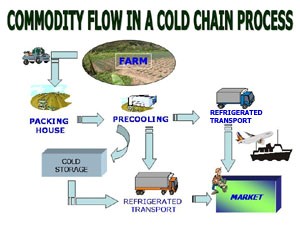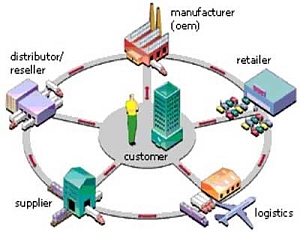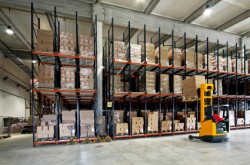 As expected, the final rule for truck drivers’ hours-of-service (HOS) was issued by the Department of Transportation’s Federal Motor Carrier Safety Administration (FMCSA) today.
As expected, the final rule for truck drivers’ hours-of-service (HOS) was issued by the Department of Transportation’s Federal Motor Carrier Safety Administration (FMCSA) today.
In December 2010, the FMCSA rolled out its proposed HOS rules changes, which have received decidedly mixed reviews in terms of their potential impact, in terms of its potential for an increase in the cost of doing business, as well as questions from trucking industry stakeholders as to whether or not these rules need to be changed from their current version, which have been in effect since 2004.
The final HOS rule is comprised of the following, according to FMCSA:
– the maximum number of hours a truck driver can work within a week has been reduced by 12 hours from 82 to 70;
– truck drivers cannot drive after working eight hours without first taking a break of at least 30 minutes, and drivers can take the 30-minute break whenever they need rest during the eight-hour window;
– the final rule retains the current 11-hour daily driving limit (the FMCSA was considering lowering it to 10 hours) and will continue to conduct data analysis and research to further examine any risks associated with the 11 hours of driving time;
– truckers who maximize their weekly work hours to take at least two nights’ rest when their 24-hour body clock demands sleep the most – from 1:00 a.m. to 5:00 a.m. This rest requirement is part of the rule’s “34-hour restart†provision that allows drivers to restart the clock on their work week by taking at least 34 consecutive hours off-duty. The final rule allows drivers to use the restart provision only once during a seven-day period; and
– carriers that allow drivers to exceed the 11-hour driving limit by 3 or more hours could be fined $11,000 per offense, and drivers could face civil penalties of up to $2,750 for each offense.
FMCSA officials said that commercial truck drivers and companies must comply with the HOS final rule by July 1, 2013.
As has been the case over the last year, the debate over HOS regulations has been somewhat polarizing.
On one side are safety advocates that maintain making these changes is the right and safe thing to do, as evidenced by a letter send to President Obama in October by a group of senators, including Frank R. Lautenberg (D-NJ), Chairman of the Commerce Subcommittee on Surface Transportation, and Senators John D. (Jay) Rockefeller (D-WV), Chairman of the Senate Commerce Committee, and Barbara Boxer (D-CA), Chairman of the Senate Environment and Public Works Committee in which they said they support the proposed HOS rules.
“The National Transportation Safety Board has found that fatigue is the primary factor in 30 to 40 percent of large truck crashes,†the Senators wrote. “The DOT’s proposal would permit increased flexibility for CMV drivers to get the adequate rest when they need it and to adjust their schedules to account for unanticipated delays without sacrificing a full day’s work. As you finalize the HOS rules, we urge you to make safety, scientific research, and the work that has already been completed by the DOT the primary factors in your decision.â€
American Trucking Associations President and CEO blasted the final HOS rule.
“Today’s announcement of a new rule on the hours-of-service is completely unsurprising,†Graves said in a statement. “What is surprising and new to us is that for the first time in the agency’s history, FMCSA has chosen to eschew a stream of positive safety data and cave in to a vocal anti-truck minority and issue a rule that will have no positive impact on safety. From the beginning of this process in October 2009, the agency set itself on a course to fix a rule that’s not only not broken, but by all objective accounts is working to improve highway safety. Unfortunately, along the way, FMCSA twisted data and, as part of this final rule, is using unjustified causal estimates to justify unnecessary changes.â€
What’s more, the ATA has repeatedly stated that the current HOS rules, which have been in place since 2004, have allowed the trucking industry to move more than 70 percent of U.S. goods while achieving record low levels of crashes and fatalities. Graves added that if there is a positive in this rule, it is the lengthy 18-month period of time before it becomes effective, which will give ATA time to consider legal options, noting that by delaying implementation of this rule, the agency is acknowledging there is no safety crisis on U.S. highways.
Michael A. Regan, president of TranzAct Technologies, chairman of the NASSTRAC Advocacy Committee, and point man for the planned February 1 Washington, D.C. “fly-in,†entitled Stand Up For Trucking, which will lobby Washington policy makers and legislators on the importance of maintaining and improving productivity in the trucking industry, said in an interview that this ruling will present major challenges for the shippers’ supply chains but noted it also cold have been worse.
“It is not as bad as it could have been,†said Regan, “and I don’t think it is over yet. One thing that is going to be very difficult is the change in the restart provision, which will present a very interesting dynamic for scheduling. There is a real incongruity in this decision and that is that the FMCSA says it wants to make the roads safer; as part of that you need to deal with congestion. Yet this rule is structured to maximize congestion after 5 p.m.â€
Regan said a quandary within this rule rests in how to appease safety groups in favor of this rule—such as Public Citizen, Advocates for Highway Safety, unions and other groups—without having shippers and carriers up in arms. And with the changes in the 34-hour restart provision there are going to be drivers laid up in their ability to get back on the road, which shippers have not fully taken into account, along with Electronic Onboard Recorders eventually being implemented, which will change how driving a truck looked like prior to these regulations.
Casey Chroust, EVP of retail operations, at the Retail Industry Leaders Association (RILA) told LM that the retail industry is firmly against the HOS rule.
“Retailers are firmly aligned with carriers against these final HOS rules,†he said. “In today’s retail supply chain, just-in-time inventory rules the day. Retailers’ distribution networks are fine-tuned machines that are optimized down to the mile. HOS times greatly impact the ability for retailers to fulfill and ship their goods. We built distribution networks around the existing rules and done studies to determine optimal placement of distribution centers with the current HOS rules in place and the reach that it gets them. Now, the range of how far carriers can take retailers’ products will be reduced, coupled with a reduction in the ability of retailers to deliver goods in off-peak hours. These rules will increase congestion, costs, and emissions as a result.â€
 Huge vessels are the future of freight services worldwide
Huge vessels are the future of freight services worldwide


 Secondly, Supply Chain Management: This description refers to the organisation of the supply chain process which allows maximisation of consumer value and the ability of attaining a viable competitive stance within the market. All companies involved in the development of the supply chain procedure are mindful of introducing techniques that enhance and fulfil the process ensuring the most sustainable methods are utilised and further developed. The term supply chain covers all aspects from the manufacture and development of a product to product sourcing, production and logistics.
Secondly, Supply Chain Management: This description refers to the organisation of the supply chain process which allows maximisation of consumer value and the ability of attaining a viable competitive stance within the market. All companies involved in the development of the supply chain procedure are mindful of introducing techniques that enhance and fulfil the process ensuring the most sustainable methods are utilised and further developed. The term supply chain covers all aspects from the manufacture and development of a product to product sourcing, production and logistics. To sum up – SCM is the control of resources, data and cash as they channel their way from supplier all the way through to consumer. All corporations involved need to synchronise and integrate the movements to ensure the process is streamlined. To attain an efficacious SCM system the desired result is to diminish stock levels whilst upholding availability. Companies involved in the supply chain process are now starting to incorporate innovative software systems with Web interfaces to run alongside, or indeed, replace the original Web-based application service providers (ASP) as a way of augmenting the future of the supply chain lifecycle.
To sum up – SCM is the control of resources, data and cash as they channel their way from supplier all the way through to consumer. All corporations involved need to synchronise and integrate the movements to ensure the process is streamlined. To attain an efficacious SCM system the desired result is to diminish stock levels whilst upholding availability. Companies involved in the supply chain process are now starting to incorporate innovative software systems with Web interfaces to run alongside, or indeed, replace the original Web-based application service providers (ASP) as a way of augmenting the future of the supply chain lifecycle. While most people know that freight claim management is time consuming, do you realize how much time you or your staff are really spending managing freight claims?
While most people know that freight claim management is time consuming, do you realize how much time you or your staff are really spending managing freight claims?  You understand that managing your inventory by excel spreadsheets is no longer a solution. You understand that the costs of data entry errors are too much to overcome. As such, you’ve moved forward with investing in an enterprise resource planning (ERP) software and have started to barcode all inventory counts. You also understand that to properly manage your warehouse means you must continually keep track of your work-in-process, raw material and finished goods inventory. Doing away with spreadsheets was the first step, while the second included purchasing an inventory management software. The third and final step includes upgrading your warehouse with automated storage and retrieval systems. So what kind of benefits can you expect from this third and final step? More importantly, why have so many of today’s enterprises decided to install these automated storage systems?
You understand that managing your inventory by excel spreadsheets is no longer a solution. You understand that the costs of data entry errors are too much to overcome. As such, you’ve moved forward with investing in an enterprise resource planning (ERP) software and have started to barcode all inventory counts. You also understand that to properly manage your warehouse means you must continually keep track of your work-in-process, raw material and finished goods inventory. Doing away with spreadsheets was the first step, while the second included purchasing an inventory management software. The third and final step includes upgrading your warehouse with automated storage and retrieval systems. So what kind of benefits can you expect from this third and final step? More importantly, why have so many of today’s enterprises decided to install these automated storage systems? A few years ago, the only way to buy or
A few years ago, the only way to buy or  In 2008, the FMCSA issued a final rule that changes the way states must verify the medical certification for commercial truck drivers who are renewing or applying for a CDL.
In 2008, the FMCSA issued a final rule that changes the way states must verify the medical certification for commercial truck drivers who are renewing or applying for a CDL. As expected, the final rule for truck drivers’ hours-of-service (HOS) was issued by the Department of Transportation’s Federal Motor Carrier Safety Administration (FMCSA) today.
As expected, the final rule for truck drivers’ hours-of-service (HOS) was issued by the Department of Transportation’s Federal Motor Carrier Safety Administration (FMCSA) today. Procurement and coordinating logistics is extremely fast paced. It is one of the most important roles within a business, with owners, sales staff and customers relying on you to get the product from A to B as quickly, safely and cost effective as possible whilst providing the best customer service on all levels.
Procurement and coordinating logistics is extremely fast paced. It is one of the most important roles within a business, with owners, sales staff and customers relying on you to get the product from A to B as quickly, safely and cost effective as possible whilst providing the best customer service on all levels.